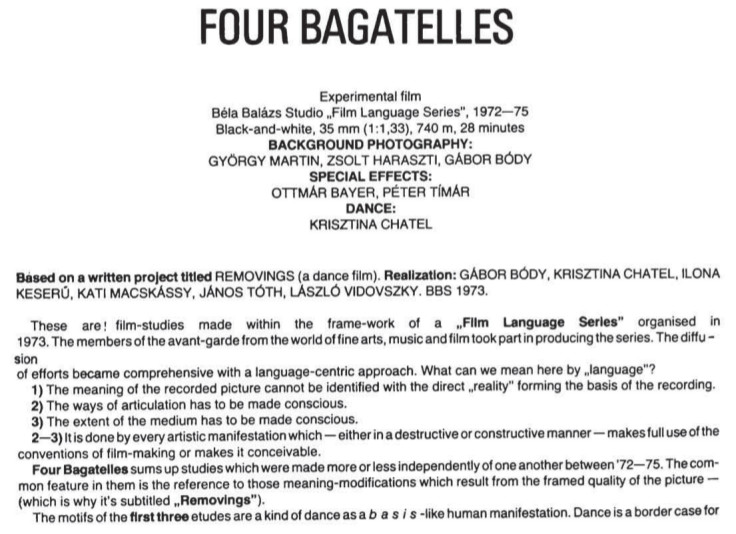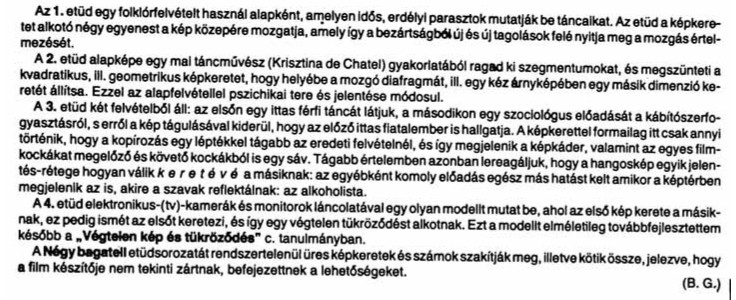Difference between revisions of "Gábor Bódy"
| Line 50: | Line 50: | ||
* Gábor Bódy, Véra Bódy (eds.), ''Video in Kunst und Alltag. Vom kommerziellen zum kulturellen Videoclip'', Cologne: DuMont Verlag, 1986 | * Gábor Bódy, Véra Bódy (eds.), ''Video in Kunst und Alltag. Vom kommerziellen zum kulturellen Videoclip'', Cologne: DuMont Verlag, 1986 | ||
* László Beke, Miklós Peternák (eds.), [http://www.c3.hu/collection/videomuveszet/gabor_body/index.html ''Bódy Gabór 1946-1985. A Presentation of his Work''], Budapest: Mucsarnok, 1987 (English/Hungarian) | * László Beke, Miklós Peternák (eds.), [http://www.c3.hu/collection/videomuveszet/gabor_body/index.html ''Bódy Gabór 1946-1985. A Presentation of his Work''], Budapest: Mucsarnok, 1987 (English/Hungarian) | ||
| + | * Dan Kidner, George Clark and James Richards, [http://www.picture-this.org.uk/eventsexhibitions/video-shop/2012/a-detour-around-infermental ''A Detour Around Infermental''], Southend-on-Sea: Focal Point Gallery, 2012. | ||
; Writings | ; Writings | ||
Revision as of 12:03, 14 August 2012
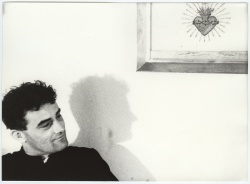 In the film The Dog's Night Song (Kutya éji dala, 1983). | |
| Born |
August 30, 1946 Budapest, Hungary |
|---|---|
| Died |
October 24, 1985 (aged 39) Budapest, Hungary |
Born 1946 in Budapest. Hungarian film director, screenwriter, theoretic, and occasional actor. A pioneer of experimental filmmaking and film language, Bódy is one of the most important figures of Hungarian cinema.
Bódy was born in an urban middle-class family. He studied history and philosophy at Loránd Eötvös University and later filmmaking at the Academy for Theater and Film Arts. During his university days he became an influential member of the Béla Balázs Stúdió (BBS). He made his first film A Harmadik (The Third) (a documentary about students preparing an adaptation of Faust on stage) in 1971. He established various experimental and avantgarde projects at BBS including the Film Language Series in 1973 and the K/3 experimental film group in 1976, reshaping the postwar Hungarian avantgarde film's path.
In 1975 he completed his debut feature at BBS, which was also his graduation thesis film at the university. Amerikai Anzix (American Torso) won the Grand Prize for best new filmmaker at "International Filmfestival Mannheim-Heidelberg" and the Hungarian Film Critics prize for best first film. The film which decipts the lives of Hungarian 1848 Revolution veterans in the American Civil War features Bódy's experimentalism at the fullest. The whole film was re-edited using his own method called "light editing" in order to make it resemble a wracked silent film from the late 1800s.
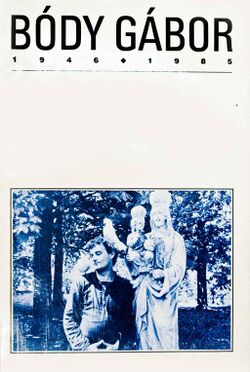
His next feature Narcisz és Psyché was the largest-scale Hungarian production of its era. This epic production based on Sándor Weöres's poetic work Psyché starred Patricia Adriani, Udo Kier and György Cserhalmi and exists in three versions: an original 210min two part version, a 136min version for foreign distribution and a 270min three part television version.
In 1980 Bódy began to work on the first international video magazine INFERMENTAL and managed to publish the first of 10 issues (plus one special issue) while on a residency at DAAD Berliner Küunstlerprogram in 1982. The series published featured a range of guest editors and in total included work from over 1500 artists from 36 countries and was published up to 1991.
After many frustrated projects Bódy managed to complete what was to become his final feature film Kutya éji dala (Dog's Night Song). Bódy cast himself as the lead in this ambitious and influential feature which incorporated Super8 and video footage as well as a range of Hungarian underground punk bands of the time in order to a film "deeply rooted in the fundamentals of today's reality."
In 1985 Bódy died under sketchy circumstances. A later published information (2001) hints his earlier collaboration (1973-1983) with the Hungarian Secret Police, the III/III. Authorities of the time (Hungary was then considered a 'satellite' country of the Soviet Union) stated that he had killed himself. His widow instead preferred a charge of murder against certain unidentified parties. No official investigation followed and Bódy's fate remains a mystery to this day.
Works
Four Bagatelles (Négy Bagatell)
35mm, 28 min, 1975. Download (WEBM), Subtitles
Source: László Beke, Miklós Peternák (eds.), Gábor Bódy 1946-1985. A Presentation of his Work, Budapest: Mucsarnok, 1987. pp 90-91Miklós Peternák: Gábor Bódy. The Artist and the Computer
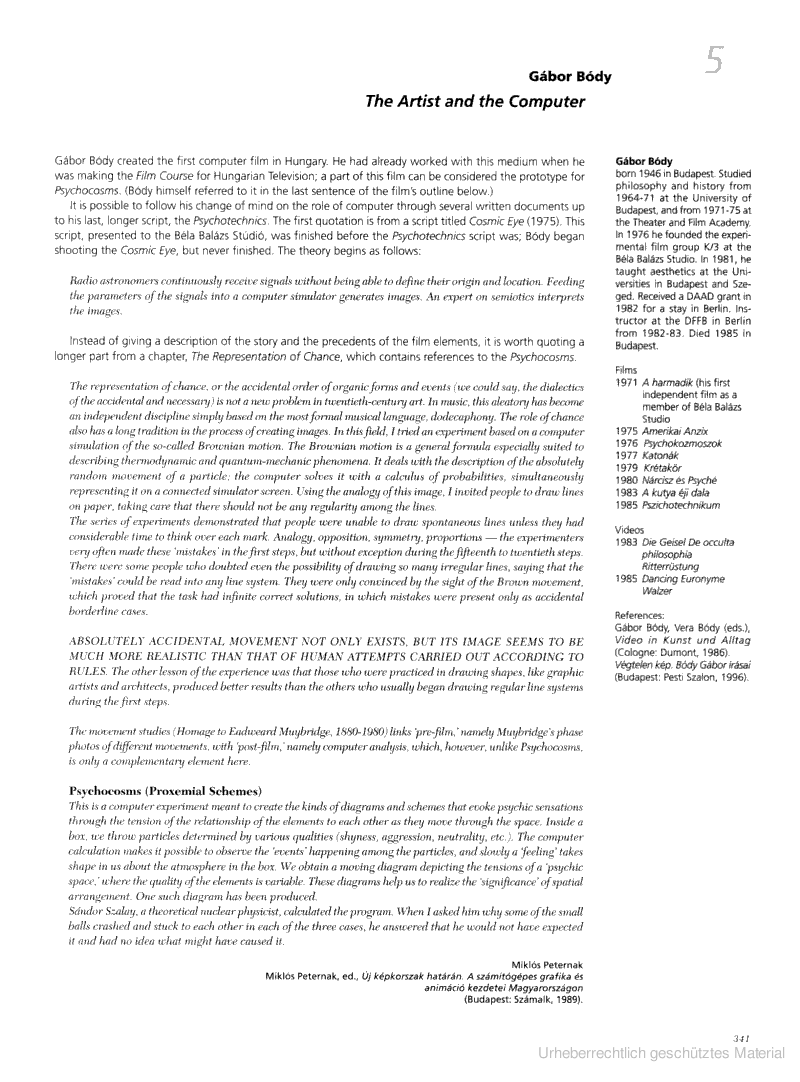
source: Miklós Peternák: "Gábor Bódy. The Artist and the Computer", in Beyond Art. A Third Culture, edited by Peter Weibel, 2005.
Bryan Burns on Gábor Bódy
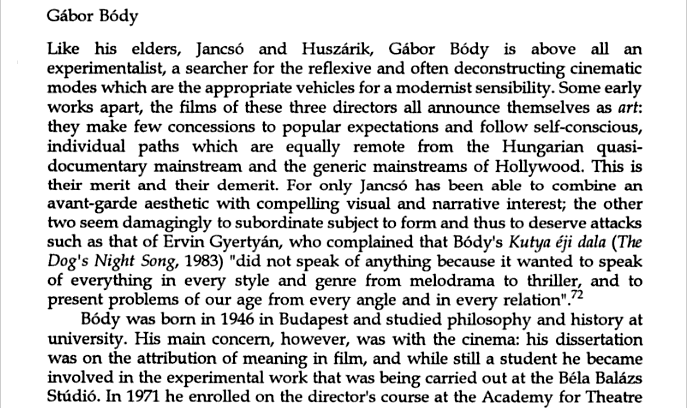
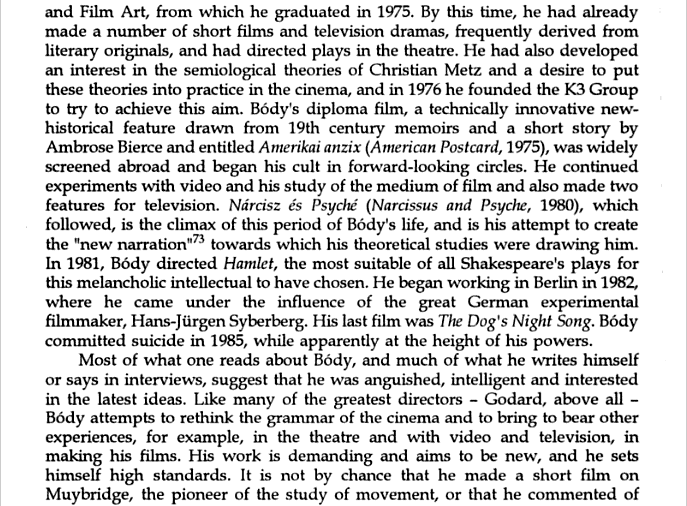
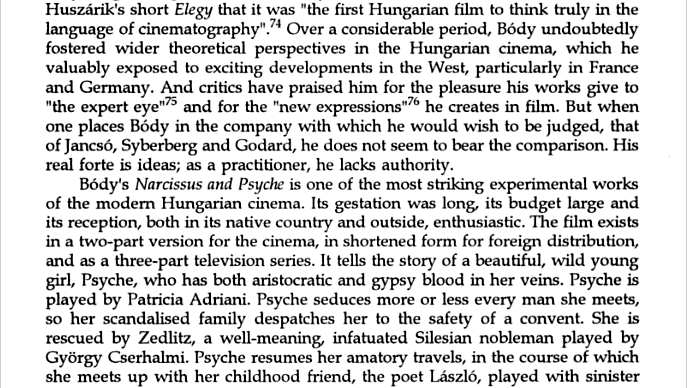
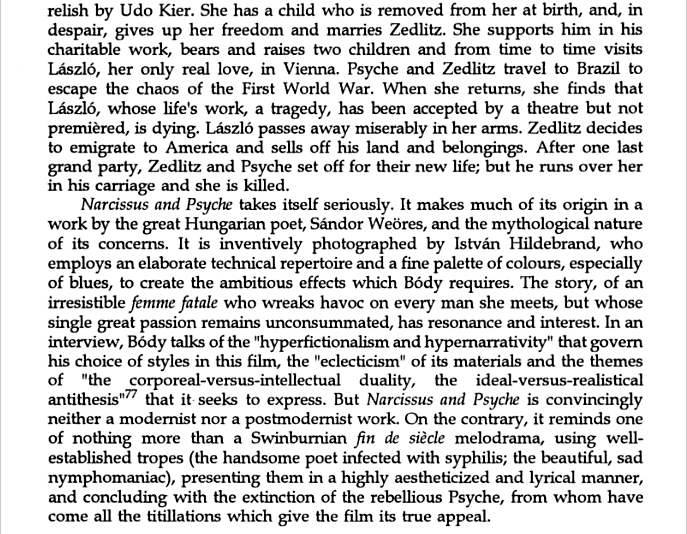
source: Bryan Burns, World cinema: Hungary, 1996. p. 171-173 (copyright: author)
Publications
- Books
- INFERMENTAL, Videokunst-Magazin, 1980-1986
- Mutante Medien, Video/Book
- Veruschka and Gábor Bódy (eds.), AXIS, Cologne: DuMont Verlag, 1986. Video/book. Two-hour cassette anthology of international video art accompanied by an explanatory book.
- Gábor Bódy, Véra Bódy (eds.), Video in Kunst und Alltag. Vom kommerziellen zum kulturellen Videoclip, Cologne: DuMont Verlag, 1986
- László Beke, Miklós Peternák (eds.), Bódy Gabór 1946-1985. A Presentation of his Work, Budapest: Mucsarnok, 1987 (English/Hungarian)
- Dan Kidner, George Clark and James Richards, A Detour Around Infermental, Southend-on-Sea: Focal Point Gallery, 2012.
- Writings
- Gábor Bódy, "Confession on writing and film", Budapest, 1970
- Gábor Bódy, "Ultratraditionalism tratra or the art of frantic fidelity", Budapest, 1974
- Gábor Bódy, "To the debate of the film language series", Budapest, 1974
- Gábor Bódy, "Introduction to the work schedule of group K3", Béla Balász Studio, 1976
- Gábor Bódy, "The Directions of Young Hungarian Film", Valóság, 1977. Paper.
- Gábor Bódy, "Die kreative Sprache der Kinematographie", 1983. Paper.
- Gábor Bódy, "Cosmic eye – science non-fiction (fiction)", Béla Balász Studio, 1975
- Gábor Bódy, "Infinite Image and Reflection. Total Expanded Cinema". A lecture delivered at the Edinburgh Film Festival, 1978
- Gábor Bódy, "Was ist Video – work in progress", Berlin, 1983
- Gábor Bódy, "Das schöne Licht" (in connection with the Light seminar), Berlin, 1983
- Attribution of meaning in cinematography, Berlin-Budapest, 1983
- Filme, Video, Video auf Film, Film auf Video, Berlin, 1983
- Either/Or in Chinatown, Video Guide, Vancouver, 1985
- Zeittransgraphie, Berlin, 1986
- Essays about Gábor Bódy
- J Hobermann, Gabór Bódy, Artforum (NY) 19, 1981
- K Sierek/N Ender, Filmlogbuch (W) 2, 1985
- L Beke, NIKE – New \art in Europa (M), 1986
- I Antal, Muvészet 8, 1987
- Ulrich Gregor, "Bódy Gábor. The most outstanding in European cinema of the 70s and 80s" [1]
- jepe, "Gabor Body - in the centre of gravitation", [2]
See also
Hungary#Experimental_film.2C_avant-garde_film, Hungary#Video_art
External links
- http://bodygabor.hu/
- Bio: http://www.bodygabor.hu/bio/?id=129
- http://en.wikipedia.org/wiki/G%C3%A1bor_B%C3%B3dy
- Bio: http://www.medienkunstnetz.de/artist/body/biography/
- http://www.ludwigmuseum.hu/site.php?inc=kiallitas&kiallitasId=291&menuId=10, http://issuu.com/ludwigmuseum/docs/body_gabor
- http://www.cinovid.org/person/2593
- http://newmedia-arts.net/cgi-bin/show-art.asp?LG=GBR&ID=A000000257&na=BODY&pna=GABOR&DOC=expo
- Exhibition in Berlin, 2011
